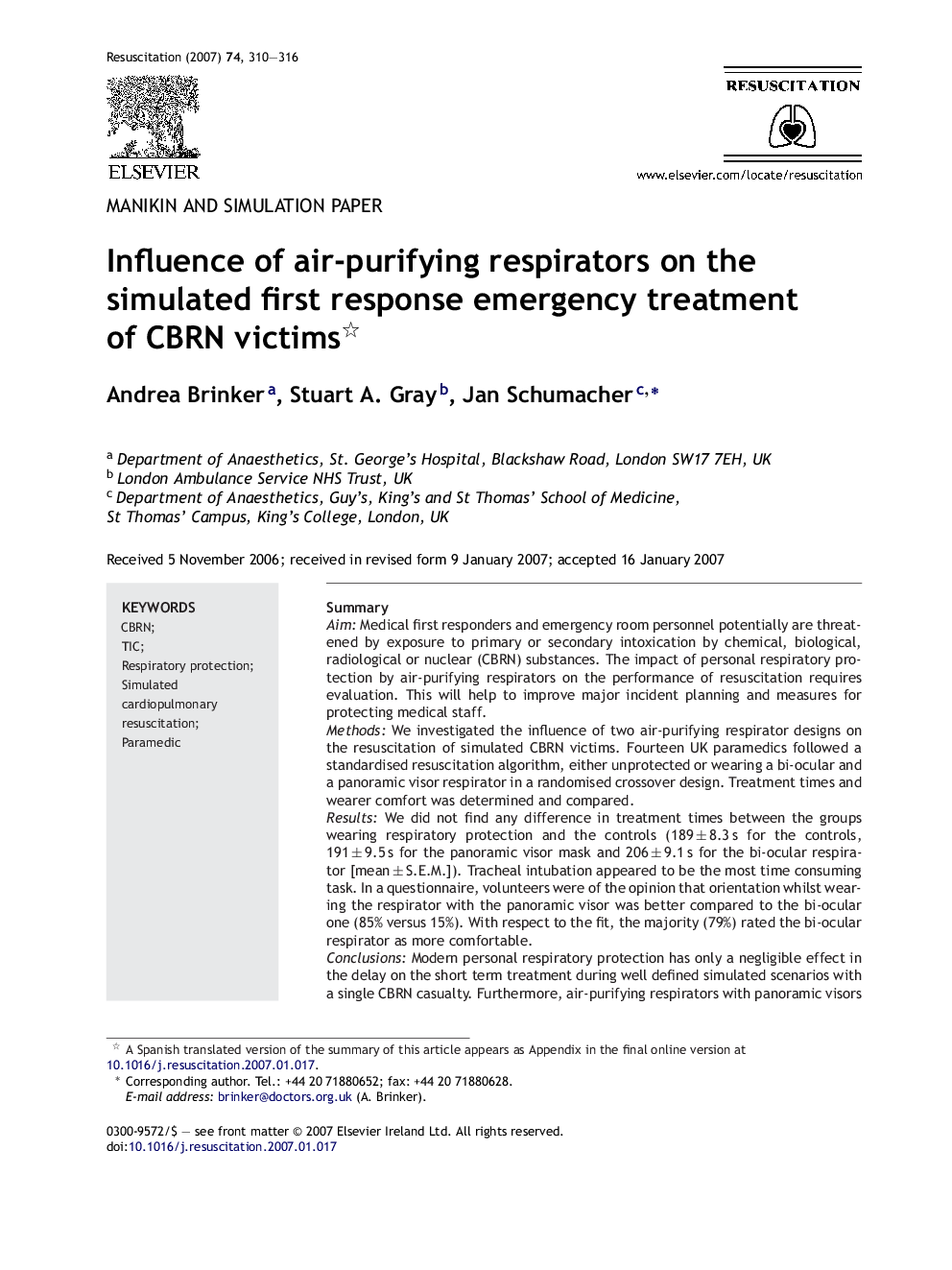| Article ID | Journal | Published Year | Pages | File Type |
|---|---|---|---|---|
| 3010704 | Resuscitation | 2007 | 7 Pages |
SummaryAimMedical first responders and emergency room personnel potentially are threatened by exposure to primary or secondary intoxication by chemical, biological, radiological or nuclear (CBRN) substances. The impact of personal respiratory protection by air-purifying respirators on the performance of resuscitation requires evaluation. This will help to improve major incident planning and measures for protecting medical staff.MethodsWe investigated the influence of two air-purifying respirator designs on the resuscitation of simulated CBRN victims. Fourteen UK paramedics followed a standardised resuscitation algorithm, either unprotected or wearing a bi-ocular and a panoramic visor respirator in a randomised crossover design. Treatment times and wearer comfort was determined and compared.ResultsWe did not find any difference in treatment times between the groups wearing respiratory protection and the controls (189 ± 8.3 s for the controls, 191 ± 9.5 s for the panoramic visor mask and 206 ± 9.1 s for the bi-ocular respirator [mean ± S.E.M.]). Tracheal intubation appeared to be the most time consuming task. In a questionnaire, volunteers were of the opinion that orientation whilst wearing the respirator with the panoramic visor was better compared to the bi-ocular one (85% versus 15%). With respect to the fit, the majority (79%) rated the bi-ocular respirator as more comfortable.ConclusionsModern personal respiratory protection has only a negligible effect in the delay on the short term treatment during well defined simulated scenarios with a single CBRN casualty. Furthermore, air-purifying respirators with panoramic visors seem to allow a better orientation for medical first responders during simulated resuscitation.
